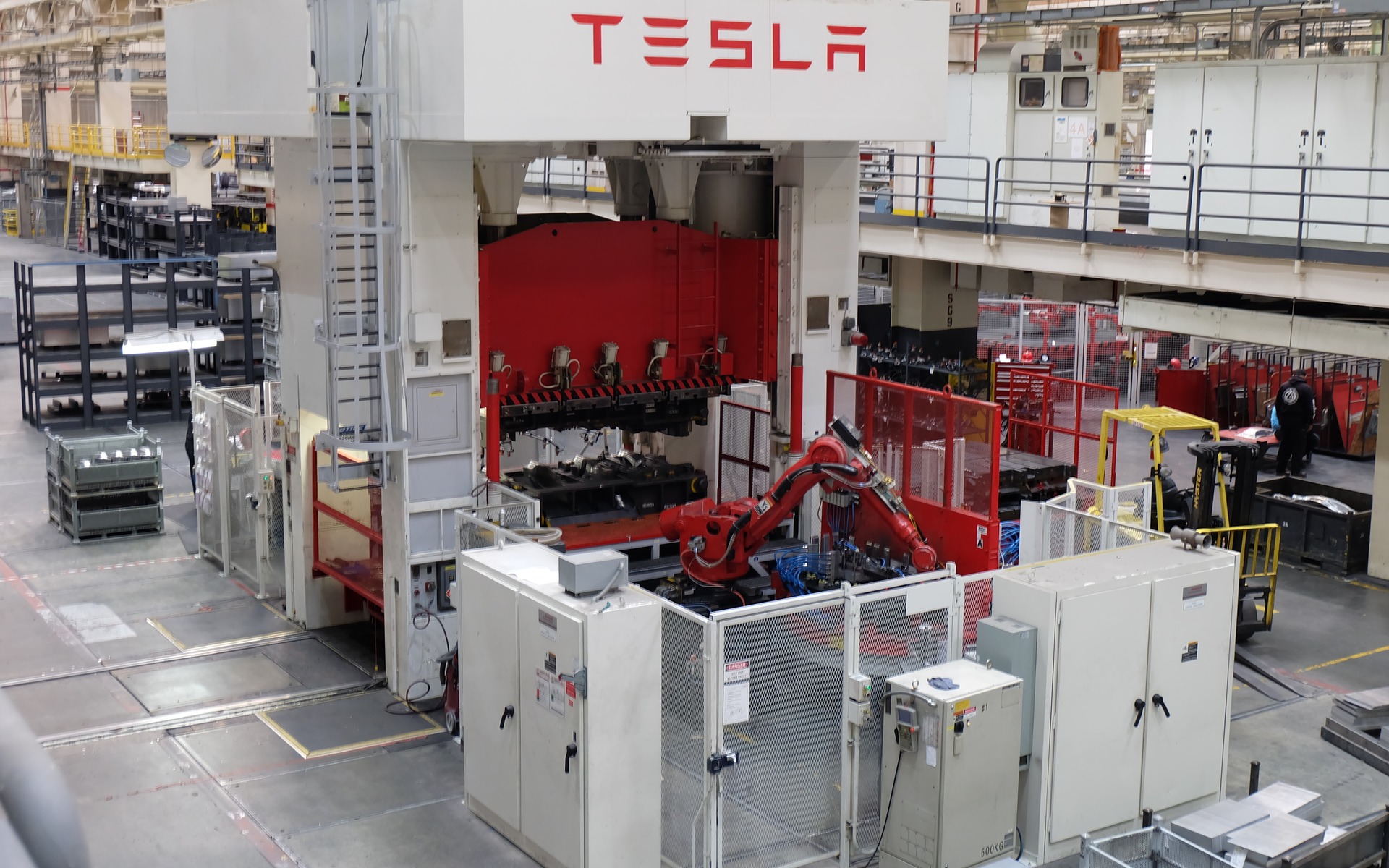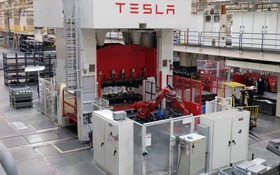The Car Guide Visits Tesla’s Factory
A few weeks ago, The Car Guide took a tour of Tesla’s installations in California. This immersion in the universe of the electric car allowed us to draw a complete picture of the Tesla brand, its owner and its cars. Here’s the first article of a full report on Tesla Motors.
***
- Also: Tesla: The Early Years to Today—and Tomorrow
- Also: Exclusive: Tesla Model S P90D: A High-Speed 5- or 7-Seat Electric Rocket Ship
While the COP21 Paris Climate Conference was in full swing, The Car Guide was visiting the Tesla Motors factory in Freemont, California, which sells the all-electric Model S and will soon roll out the Model X. In addition to the company’s headquarters, the site is home to one of the most sophisticated automotive assembly plants in the world, with a total floor surface of 5.3 million square feet.
Built in 1962 by General Motors, the plant later served as the factory for New United Motor Manufacturing (NUMMI), a 1984-to-2009 joint venture between GM and Toyota that produced up to 500,000 cars per year.
Building 2,500 units of the Tesla Roadster a year – the brand’s first model – was one thing, but assembling tens of thousands of Model S sedans required a much bigger operation. Tesla purchased the plant in 2010; two years later, with several improvements made such as skylights and white walls and floors, the first units of the Model S were rolling out.
100,000 vehicles annually
This year, the factory has a capacity of 100,000 units with the addition of the Model X’s assembly line. 458 high-tech robots lift, spin, weld and assemble the aluminum cockpit and body of the Model X with amazing precision. In comparison, the Model S’ line has a third as many robots. The plant currently produces 1,000 units a week, but what’s even more interesting is that all the aluminum and steel components are manufactured on location using huge stamping machinery, while most other automakers rely on outside suppliers.
The future is 3
The upcoming Model 3 will be built in Freemont starting in 2016, with sales expected to start in 2017. For now, we can confirm that the plant isn’t undergoing any expansion, but GM and Toyota were able to crank out 500,000 vehicles a year from this factory without Tesla’s sophisticated tooling. The Model 3, which should bring the EV down to a more affordable level with a price of $35,000 USD, will allow Tesla Motors to increase profits and keep the company running.
Presented in the spring of 2016, the highly anticipated Model 3 will be smaller than the Model S and offered in both sedan and crossover body styles. Its dimensions will be equivalent to those of the BMW 3 Series, and by looking at the company’s current products, the Model 3 could very well be a sedan with a sporty and aerodynamic shape. During our visit of the factory, we weren’t able to see any drawings or prototypes of the Model 3, which isn’t preventing us to expect a car as ground-breaking is the Model S was, and still is.
Lithium-ion batteries: the future is near
Meanwhile, the construction of Tesla’s Gigafactory battery plant in Nevada – a collaboration with Panasonic – is well under way. This mega-factory and the Model 3 are both key to Tesla’s future; the brand expects to sell 500,000 of them annually in 2020.
According to Tesla, in four years, this plant will build more lithium-ion batteries than the entire global production in 2013. Where will they get all the lithium required for 500,000 batteries, amounting to 25,000 tons of lithium a year?
Nemaska, an enormous reserve of lithium in Quebec
This company located in the province of Quebec, though controlled by foreign interests, is exploiting one of the biggest lithium deposits in the world, with a production capacity of 28,000 tons a year. There’s definitely interest here for Tesla. In fact, because of the increasing demand for lithium, second-tier deposits are becoming more and more important.
The spodumene extract that will be produced at Nemaska Lithium’s Whabouchi mine will be sent to a transformation plant that the company is planning to establish in Shawinigan, in the old Résolu paper mill. By the way, spodumene is an aluminum silicate (LiAl(Si206)) that contains up to 8% of lithium oxide (Li2O) from which lithium is drawn.
Could it be possible that one day, Tesla would suddenly need the province of Quebec to build their vehicles?
Marc Lachapelle’s test drives
- Exclusive! Tesla Model S P90D: A 5 or 7-Seat Electric Rocket
- Tesla Model S P85D and 70D – AWD, Performance and Better Price












